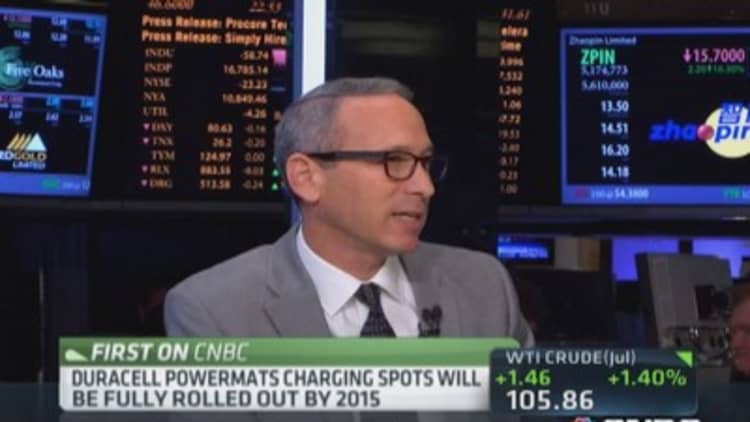No matter how fast, smart and powerful our phones get, they still often die by midday if we leave our charger behind or can't find a place to plug it in. Consumers have been complaining it about for years, if not decades.
So rather than waiting for battery technology to catch up to innovation in microprocessors, displays and connectivity, Qualcomm is out to turn tabletops, car headrests and bookshelves into wireless charging stations.
"We want to eliminate battery anxiety," Mark Hunsicker, senior director of wireless power solutions at Qualcomm, said Tuesday in an interview and demo in San Francisco. "You should no longer have to worry about turning Wi-Fi off or Bluetooth off."
Using what's called magnetic resonance technology, Qualcomm spent seven years developing a system that can wirelessly charge multiple devices—smartphones, tablets, wearables—at once. And like in the mobile phone market, the San Diego-based company has built a portfolio of patents so it can make money licensing the technology, assuming sales take off.
By the fourth quarter of this year or early part of next, Hunsicker expects stand-alone charging stations based on Qualcomm's technology to be sold in retail outlets. The more exciting part, he says, comes when furniture companies, auto manufacturers and coffee shops get in the game with built-in hubs.
Just as consumers expect free and functional Wi-Fi when they sit down at a coffee shop, they should know they can put all their devices down at the table for power instead of having to find, and perhaps monopolize, a wall outlet.
Read MoreWi-Fi World: Who wins?
Within the car, in addition to getting rid of the various USB chords and adapters that people carry around, the new technology can be embedded in the back of the headrest, so parents can charge their tablets while their kids are watching cartoons on them, Hunsicker said. Chargers can also be on armrests or in the coin compartment.
When using a tabletop, the signal can reach through objects like a book or magazine, so the gadgets don't have to be sitting right on the power supply.
"You want it to be a natural part of your day-to-day experience," Hunsicker said.
Powermat rolls out in Starbucks

In 2012, Qualcomm became a founding member of the Alliance for Wireless Power (AWP), a non-profit organization promoting magnetic resonance and a brand called Rezence. The group has more than 100 members, including Samsung, Intel and Dell.
Noticeably absent from the alliance is Apple. The iPhone and iPad maker, which is known for going it alone, was awarded its own patent earlier this year tied to wireless magnetic resonance. Without Apple's help, Qualcomm is seeking to get the rest of the industry behind the AWP standard. It made headway in February, when the alliance announced an interoperability agreement with the Power Matters Alliance (PMA), which promotes a different type of wireless charging technology.
In June, Starbucks and Duracell Powermat, both PMA members, announced the national rollout of Powermat charging stations, with deployments starting in the San Francisco Bay Area.
—By CNBC's Ari Levy


